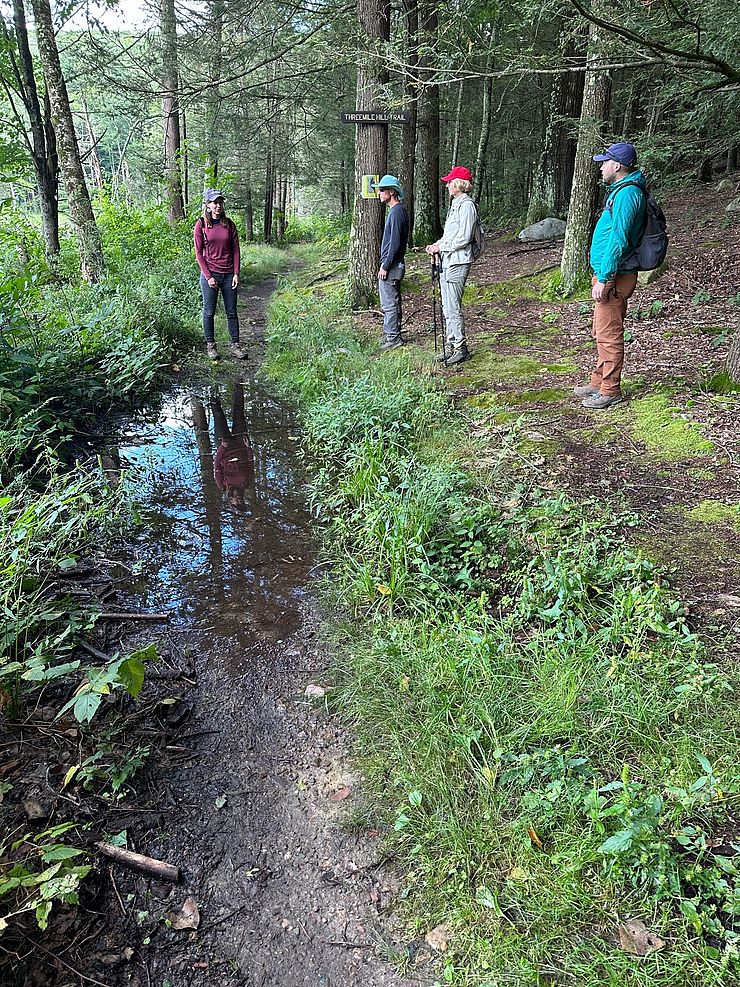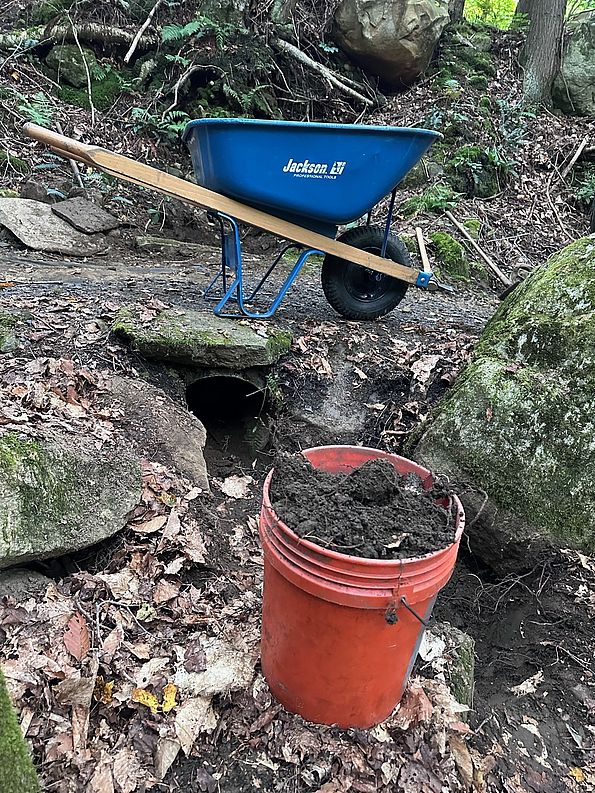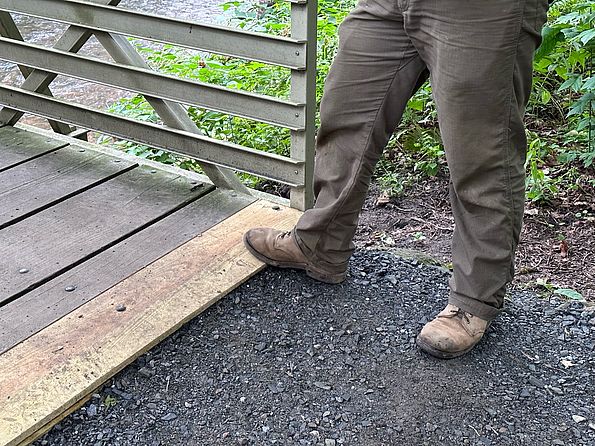Trails Built to Last

Carefully Designed Sustainable Trails are Better for People, and for the Forest
At the height of the torrential rains and flooding in the summer of 2023, BNRC received surprisingly few calls about washed-out or flooded trails.
Why? Sustainable train design.
On a recent walking tour of a new High Road route under development in Great Barrington, BNRC Stewardship Director Doug Brown and High Road Manager Deanna Smith explained the difference between a poorly designed trail and a sustainable one. As it is now, the existing path is covered with water in places, muddy in others, and full of rocks and tree roots. Several bridges are badly in need of repair or replacement.
By rerouting sections, changing the out slope (see glossary), covering exposed roots with soil, and replacing bridges, the new trail will not only be a more pleasant walk appropriate for people of varying ages and abilities, it will be more likely to withstand more extreme weather.
“Great trail building starts at the design phase,” says Deanna, who previously owned a trailbuilding company that worked all over the country. “Considering sustainability by thinking through the grade, turning radii, and soil composition, is the critical first step.” She adds, “It is much easier to design a trail with sustainability and user groups in mind from the beginning than it is to try to retrofit a poorly designed trail afterward.”
Protecting Wildlife and Forest Integrity
Well des-gned trails are not just good for people, says BNRC Trails Manager Tyler Fogg, they are good for the forest. Trails can focus human interaction with the forest, directing people away from areas that need to be left alone.
And, many large tracts of land are crisscrossed with social trails that evolved with little concern for wetlands, vernal pools, or other sensitive habitat. Washouts and gullies are increasingly common on old logging roads, leading to erosion and degradation of the surrounding habitat. A welldesigned trail avoids these problems.
Careful design doesn’t necessarily mean the trail is a gentle hike. While BNRC is increasingly focused on accessible trails like those at The Old Mill, Thomas and Palmer, and Parsons Marsh reserves, many routes, including new High Road routes, will be rugged and challenging. Nonetheless, they will be built to last.


Glossary of Trail Terms
Tread or Treadway—the walking surface of the trail. At the Old Mill Trail it’s “3/8 plusminus” which means any gravel that can pass through a 3/8” sieve.
Bench Cut—A method of trail construction employed when building into the side of a slope. This involves excavating the width of the tread into the side of the hill, until the stable soil is reached. The soil is compacted and sloped to create the tread’s surface.
Out Slope—The pitch or angle of the trail’s tread from the inside to the outside edge, where the outside edge is lower than the inside edge. Allows for water to disperse quickly from the trail’s surface to minimize runoff and erosion.
Alignment—the exact route marked out by flags before construction.
Crib Wall—A retaining wall, typically built from stone, built on the downslope side of a trail to keep the tread from collapsing. Often employed on steep side slopes where bench cutting is not feasible.
